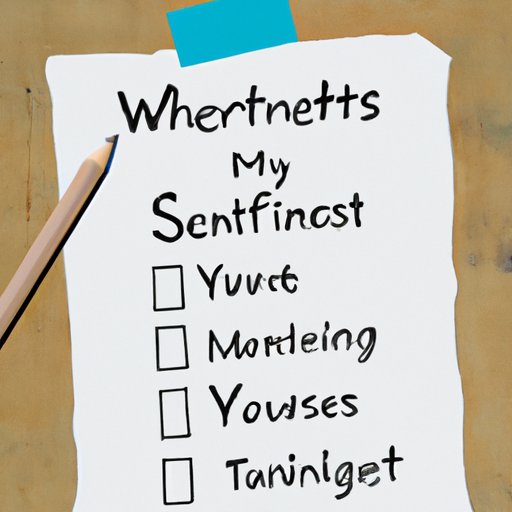Introduction
A writing resume is an important document for any writer looking to break into the industry. It’s a way for writers to showcase their writing ability and experience to potential employers. A great resume can help writers stand out from the competition and get noticed by employers.
A writing resume should include information about a writer’s education and training, professional experience, and publications or awards. It should also be written in a format that best showcases a writer’s talents and experience.

Identify Your Strengths and Weaknesses
The first step to writing a great writing resume is to assess your writing skills and experience. Take some time to think about your strengths and weaknesses as a writer. What type of writing do you excel at? Do you have any specialties or areas of expertise? Are there any topics that you struggle with? Make a list of these skills and experiences so you can highlight them on your resume.
In addition to assessing your writing skills, you should also evaluate your professional experience. What work have you done in the past? Have you held any positions related to writing, such as a copywriter or editor? Do you have any freelance or volunteer experience that could be relevant? Again, make a list of your experiences so you can easily reference them when writing your resume.
Gather Necessary Information
Once you’ve identified your strengths and weaknesses as a writer, it’s time to start gathering the necessary information for your resume. Start by listing your education and any trainings or certifications you’ve received. If you have a degree in creative writing or English literature, then you should definitely include that.
Next, list your professional experience. Include any jobs you’ve had related to writing, such as copywriting or editing. You should also include any freelance or volunteer positions that are relevant. Be sure to include the company name, job title, dates of employment, and a brief description of your duties.
Finally, list any publications or awards you’ve received for your writing. This could include books you’ve published, articles you’ve written, or awards you’ve won. Be sure to include any relevant details, such as the publication date or award ceremony.
Choose the Right Format
Once you’ve gathered all the necessary information, it’s time to choose the right format for your writing resume. There are two main types of resumes: chronological and functional. A chronological resume lists your experience in reverse chronological order, starting with your most recent position. A functional resume focuses on your skills and experience, rather than your job history.
When deciding which format to use, consider the job requirements. If the job requires specific experience or skills, then a chronological resume may be better. However, if the job is focused more on general skills and abilities, then a functional resume may be a better option.
Use Action Words to Describe Your Experiences
When writing your resume, it’s important to use action words to describe your experiences. Action words are verbs that describe what you did in each position. For example, instead of saying “wrote articles”, you could say “developed content for online articles”. This helps to showcase your skills and makes your resume more engaging.
When describing your experiences, be specific. Don’t just say that you wrote articles. Instead, include details such as the topics you wrote about, the types of publications they were featured in, or the number of articles you wrote. This will help to paint a clearer picture of your writing ability and experience.
Conclusion
Writing a great writing resume is an important step for any writer looking to break into the industry. To write a successful resume, assess your writing skills and experiences, gather the necessary information, choose the right format, and use action words to describe your experiences. With these tips, you’ll be able to create a resume that stands out from the competition.
If you need additional help or resources, there are plenty of websites and books dedicated to helping writers create resumes. You can also check out job boards and websites for writing gigs to get an idea of what other writers are including in their resumes. With the right resources and a little bit of effort, you’ll be able to create a writing resume that will help you get noticed by employers.
(Note: Is this article not meeting your expectations? Do you have knowledge or insights to share? Unlock new opportunities and expand your reach by joining our authors team. Click Registration to join us and share your expertise with our readers.)
